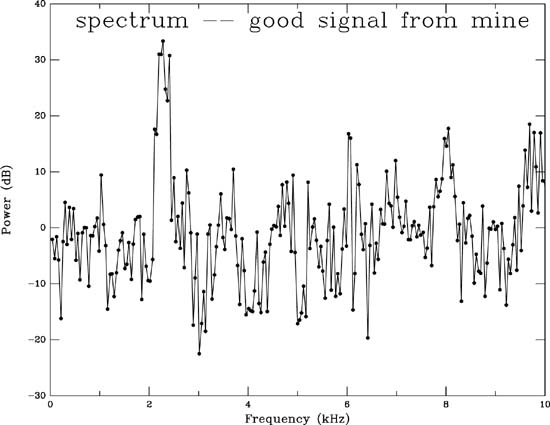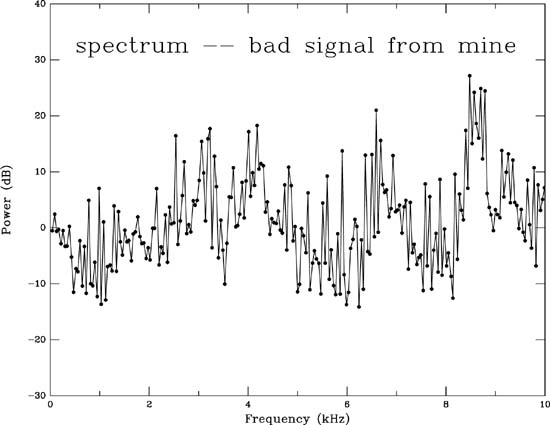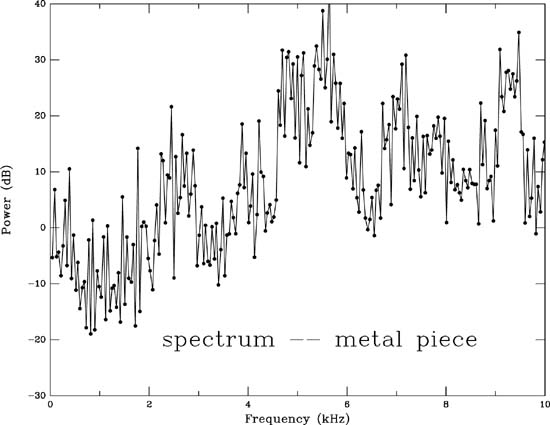Sample Spectra from Trip to Fort AP Hill
From the discussion on the previous page, one can see that the probability
of detection for the plastic mines on any one trial is roughly 75%. The
natural question to ask is: what happens during the other 25% of the trials?
Why does the spectrum not reveal the identity of the mine? The answer seems
to be most directly concerned with the difficulty of actually making good clean
contact with the item buried in the soil. Sometimes, the probe tip may not
actually be touching the buried mine. Even if the tip is touching the object,
there may be a thin layer of soil in between the tip and the object, which damps
the acoustic signal. In addition, forcing the probe through the dirt may have
temporarily distorted the mechanical alignment of the tip itself, distorting the
echo returned from the buried mine.
A combination of these factors (and probably others as well) has the net result
of providing the possibility of a false negative on any given trial. To illustrate
this point, here are two of the ten spectra taken on the VS-MKII mine when it was
buried in soil during our tests at Fort AP Hill. The first represents the condition
when the device has "worked." You can see a large peak near 2 kHz which identifies
the object as a plastic AP mine.

Now, here is the second spectrum, which represents the condition when the device
has failed. The spectrum has no distinguishing features, the cause of which is
probably one of the factors mentioned above.

The same phenomenon, namely that sometimes the device collects corrupted or
inaccurate spectra, occurs when probing objects other than mines. For example,
objects with a harder surface than plastic, notably pieces of metal and rocks,
are characterized by a very large, broad spectral peak in the 4-6 kHz region of
the spectrum. But this feature does not always appear when probing a rock or a
piece of scrap metal, again most likely due to issues of contact between the
probe and the buried object. Here is a spectrum, taken from a rusty piece of
a truck that was blown up at AP Hill, which illustrates the characteristic
feature of hard objects.

The above discussion points out an obvious conclusion: one cannot rely on a
single measurement of any object in order to positively identify it. Instead,
one must take multiple measurements in order to ensure that the characteristic
features of the buried object will be determined. As was shown on the previous
page, a majority vote on multiple spectra for each object provides a very
accurate discriminate between plastic AP mines and objects such as scrap metal
and rocks.


